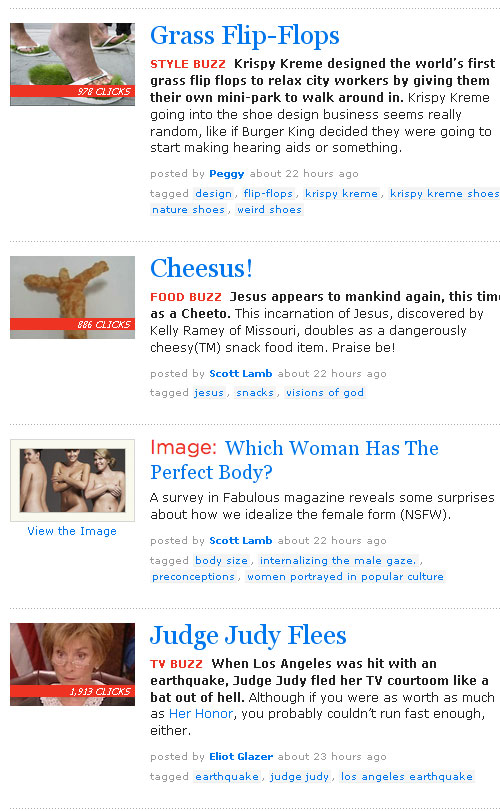I recently saw a presentation by Jonah Peretti on his career as an “viral marketing hotdog” (to quote the New York Times). Apparently I’ve had my head buried in sand for the past few years, because he’s made a name for himself as someone who knows how to get notorious and I had never heard of him: he first became known for trying to get NIKEiD to make him custom shoes emblazoned with the word ‘sweatshop’ (the notorious Nike sweatshop email), then partnered with his stand-up comedian sister to make BlackPeopleLoveUs.com, a spoof website by a couple who is proud of not being racist, and the ultra-famous New York City Rejection Line which generates automated dumping messages for unlucky men given a decoy phone number.
After this string of internet successes, he co-founded the Huffington Post and Buzzfeed, a site that tracks things that are hot on-line. He has become an expert on viral marketing and what he calls the ‘bored at work network,’ the millions of people who are searching for something to like on the web. He provides consulting advice to mass media outlets who would love to capture these waves of free publicity but somehow can’t.
The point of his talk was quite mild-mannered for a professional provocateur: he qualified viral marketing in terms of the rate of growth of an internet meme or a piece of web content. Exponential growth, in which each person who finds a meme recommends it to more than one other person, is highly desirable but almost impossible to predict (except by Jonah). On the other hand, sub-viral growth – in which each reader sends a link to less than one other person – is still valuable because it can nevertheless double the initial audience. His most salient example was the Super Bowl advertisements, which have only recently been duplicated on YouTube. The traditional media outlet guaranteed a primary audience, and the fact that the videos also existed on-line made it possible for a secondary audience to watch the ads, one that could be as large as – and was occasionally much larger than – the original audience. This is yet another argument for content providers to open their content up on-line so that it can be seen by a wider audience.
Despite all of this buzz hype, I was left feeling a little empty, wondering what any of it was meant to achieve if the most popular internet memes are so easily forgotten. It’s great to be able to get your message across, especially when it’s meaningful, but the “bored at work network” seems to have a taste for lowest-common-denominator content (above). Jonah’s early artistic interventions are socially critical, relatively high-brow and helped by the immense press access of the MIT Medialab where he was a graduate student. The real challenge will be to promote this caliber of idea for people who aren’t so lucky to have an mit.edu domain.
